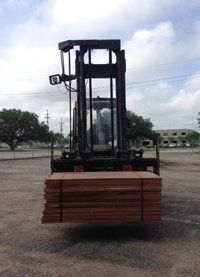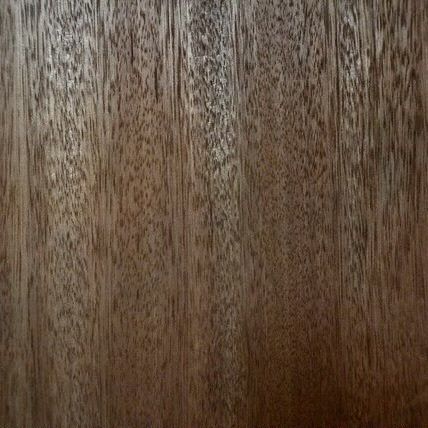Palo Maria (Calophyllum brasiliense)
Over 75 Years of Experience | Family Owned | Freight Shipping Available
Over 75 Years of ExperienceFamily OwnedFreight Shipping Available
Palo Maria (Calophyllum brasiliense)
The wood is fairly easy to work and generally yields smooth surfaces on straight-grained material.
Family:
Guttiferae
Other Common Names: Barf, Leche de Maria (Mexico), Calaba (Panama), Aceite maria (Colombia), Edaballi, Kurahara (Guayana), Balsamaria (Bolivia), Guanandi, Jacareuba (Brazil), American Sapele
Uses: Widely used in the tropics for general construction, flooring, furniture, boat construction; a favored general utility timber
Thicknesses: Available in 4/4, and 5/4 Air-Dried and Kiln-Dried
Grades: F1F & Better, Quarter Sawn, #1 Common & Better, #2 Common & Better, Select & Better
Distribution: Grows throughout the West Indies and from Mexico southward through Central America and into northern South America. It is found on all types of soils – from wet, humid to very dry sites
The Tree: When conditions are favorable, the tree attains a height of 100 to 150 ft with a long straight clear bole 3 to 6 ft in diameter; unbuttressed
Other Common Names: Barf, Leche de Maria (Mexico), Calaba (Panama), Aceite maria (Colombia), Edaballi, Kurahara (Guayana), Balsamaria (Bolivia), Guanandi, Jacareuba (Brazil), American Sapele
Uses: Widely used in the tropics for general construction, flooring, furniture, boat construction; a favored general utility timber
Thicknesses: Available in 4/4, and 5/4 Air-Dried and Kiln-Dried
Grades: F1F & Better, Quarter Sawn, #1 Common & Better, #2 Common & Better, Select & Better
Distribution: Grows throughout the West Indies and from Mexico southward through Central America and into northern South America. It is found on all types of soils – from wet, humid to very dry sites
The Tree: When conditions are favorable, the tree attains a height of 100 to 150 ft with a long straight clear bole 3 to 6 ft in diameter; unbuttressed
The Wood
General Characteristics:
Heartwood varies in color from pink to yellowish pink, to brick red or rich reddish brown; sapwood 1 to 2 in. wide, lighter in color and not always clearly differentiated from heartwood. Texture medium and fairly uniform; grain generally interlocked; luster rather low to medium; odor and taste not distinctive
Weight: Basic specific gravity (oven-dry weight/green volume) 0.51; air-dry density 39 pcf
Mechanical Properties: (First set of values based on 2-in. standard, second set of values based on 2-cm standard.) Janka side hardness 890 lb for green wood and 1,150 lb for dry. Forest Products Laboratory toughness average for green and dry material is 180 in.-lb (5/8-in. specimen)
Drying and Shrinkage: The wood is moderately difficult to air-season, drying rate varies considerably, surface checking is slight. Kiln schedule T2-D4 is suggested for 4/4 stock and T2-D3 for 8/4. Shrinkage from green to oven-dry: radial 4.6%; tangential 8.0%; volumetric 13.6%. Movement in service is rate as medium
Working Properties: The wood is fairly easy to work and generally yields smooth surfaces on straight-grained material
Durability: The heartwood is generally rated as durable to moderately durable with respect to decay resistance; rated as very susceptible to attack by dry-wood termites; not resistant to marine borers
Preservation: Heartwood is very resistant to impregnation by nonpressure and pressure systems. Sapwood has good permeability if incised
Weight: Basic specific gravity (oven-dry weight/green volume) 0.51; air-dry density 39 pcf
Mechanical Properties: (First set of values based on 2-in. standard, second set of values based on 2-cm standard.) Janka side hardness 890 lb for green wood and 1,150 lb for dry. Forest Products Laboratory toughness average for green and dry material is 180 in.-lb (5/8-in. specimen)
Drying and Shrinkage: The wood is moderately difficult to air-season, drying rate varies considerably, surface checking is slight. Kiln schedule T2-D4 is suggested for 4/4 stock and T2-D3 for 8/4. Shrinkage from green to oven-dry: radial 4.6%; tangential 8.0%; volumetric 13.6%. Movement in service is rate as medium
Working Properties: The wood is fairly easy to work and generally yields smooth surfaces on straight-grained material
Durability: The heartwood is generally rated as durable to moderately durable with respect to decay resistance; rated as very susceptible to attack by dry-wood termites; not resistant to marine borers
Preservation: Heartwood is very resistant to impregnation by nonpressure and pressure systems. Sapwood has good permeability if incised



Share On: